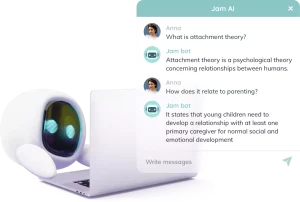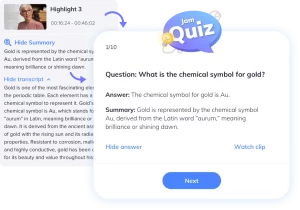Unless you’ve spent the last six months locked in a windowless room trying to complete assignments, then you’ve probably heard of ChatGPT, the AI chatbot that uses natural language processing to create humanlike conversational dialogue
As a student, hearing about websites such as ChatGPT seemed like the answer to all of my essay writing problems. This is due to the fact that students can ask ChatGPT to write paragraphs and even fully fledged essays covering all topics and information requested and the chatbot will produce a seemingly informative and realistically written piece using an academic language and tone throughout.
It can sound tempting for sure when you’re trying to write an essay at midnight that’s due at 9.00am, knowing that ChatGPT could conjure up the answers you need in a mere few minutes. It’s no surprise that many students have taken the risk in learning how to use ChatGPT to write an essay for them, however this is where problems have begun to arise.
 The problems of using ChatGPT to write an essay
The problems of using ChatGPT to write an essay
There are five main reasons which stand out to assessors that a student has used ChatGPT to write their essay:
Style of writing
While ChatGPT uses AI to produce human-like dialogue through language processing software, the content is never quite 100% as realistic as what us students can produce with our own minds from knowledge and experience. And the more information you take from ChatGPT (such as a lengthy essay), the higher the chances are that AI-produced content will stand out (as opposed to a paragraph).
Here is an example of an extract from a ChatGPT generated essay:

As a final year student who has submitted a hefty number of essays of a similar style at university, this piece would immediately be flagged up because it does not match the tone of voice that my previous essays reflect. The unique wording and phrases used by ChatGPT such as “intricacies” and the American English spelling of “analyze” in the introduction of this essay are styles of writing which will spark suspicion to university assessors as they go against my writing standards. A university lecturer has described the essay writing style of ChatGPT as easily identifiable due to its use of particularly “odd wording”, explaining that “if you were teaching somebody how to write an essay, this is how you tell them to write it before they figure out their own style”.
Accessed References
Academic essays typically require a number of primary and secondary sourced references to back up the points made throughout a piece of work. Students often have access to a reading list for the module which provides them with a range of sources they can use to reference from in their essay. It is probable that ChatGPT will use little to none of the sources from your module’s reading list in the essay it generates for you, and this will be a red flag for assessors.
Additionally, the references and sources which previous ChatGPT generated essays have included have stood out to assessors due to their obscurity, leading questions as to how the student would have found and accessed the specific source by themselves.
The first known student to be caught using ChatGPT to write an essay was forced to rewrite her assignment as she included numerous references in her essay which were questioned by the University’s standards and enhancement office due to how they were accessed and obtained, leading to further enquiry about the origins of the essay’s construction.
 False information
False information
The most concerning and risky factor to consider for using ChatGPT to write an essay at university is that it is known to produce false information and references if failing to access relevant data. AI Hallucination is when AI models produce fabricated and inaccurate responses or unrelated information to the questions being asked due to AI’s lack of real-world understanding and experience. Including false information in an academic essay is going to be a significant indicator to assessors that AI models have played a part in producing the written work submitted and can put you in a dangerous position as a student risking failed grades and the possibility of being dismissed from your course. And to make matters worse, ChatGPT has been known to produce citations for students that are made-up papers entirely!
Lack of clarity
When questions arise in an essay in which ChatGPT lacks the data and information to answer, the response will often avoid answering the question directly and not get to the point straight away through the addition of irrelevant waffle and a lack of clarity and analysis on what is being written about. One of the skills that helps us students to produce first class graded essays is the ability to show vs tell, to use analysis and depth within our writing to build elements of context and insight into what we are referring to. ChatGPT lacks this function due to being generated through Artificial Intelligence and therefore can prevent us students from achieving higher grades at university.
Plagiarism & AI detection technology
Turnitin is the plagiarism detection technology used by the majority of universities in the UK and has recently been updated to detect the use of ChatGPT and other AI generated software in essays submitted. Therefore, if we look at the statistics overall, using ChatGPT to write an essay does not seem worth the risk.
Jamworks – The safeguarded AI Education Tool to help you revise from lecture notes, flashcards and even chat directly with your lectures
Luckily for us students, there is a way to use the power of AI models to effectively write essays as well as revise content directly from your lectures, and this is with the Jamworks app.
 What is Jamworks?
What is Jamworks?
Jamworks is assistive technology software which automatically records, transcribes and summarises lectures, harnessing the power of the latest trained GPT AI models to support students’ revision at university. The Jamworks app is the solution which helped me to bring together my lecture notes and finally finish my degree. Today I’m going to show you exactly how you can use the Jamworks AI generated features at university to pass your course and reach your study goals!
 Jamworks AI Chatbot
Jamworks AI Chatbot
What makes the Jamworks AI Chatbot more effective, safe and reliable to use for writing university essays than ChatGPT is that it has recently been upgraded to become a personalised AI lesson chatbot. This means that the Jamworks AI Chatbot can answer all of your questions that are directly linked to lectures and seminars, as opposed to producing false and irrelevant information. This is a great tool to use when you need a quick memory refresh on what has been discussed in your lecture session and saves you time as a student from having to search for the answers yourself.
Automatic highlights
In addition to the Jamworks AI Chatbot, another AI generated feature is Automatic Highlights. AI is used to detect topic changes while recording your lecture session and automatically creates highlight clips of information to be noted down. Using this AI feature as a student means you can engage 100% in your lecture and focus on what is being taught as your notes are being taken for you by AI and are also automatically transcribed into written form.
 Revising from AI Flashcards
Revising from AI Flashcards
As a student you can use AI for more than just writing essays and taking notes, you can use it for revising too! The Jamworks app uses AI to generate flashcards using the information recorded from your lecture session to help test your knowledge and refresh your memory on the details you need to know.
On the surface, ChatGPT seems like the answer to stressful writing struggles for students. However, once we delve into the facts and already developing outcomes, it is clear that using ChatGPT to write an essay at university does more harm than good. It’s time that we start using safer and more efficient AI models to support our learning such as the Jamworks App and its extensive range of AI generated features available for elevated revision experiences.
Utilise AI models safely and effectively for note taking and revision at university – click here to get started with Jamworks today!